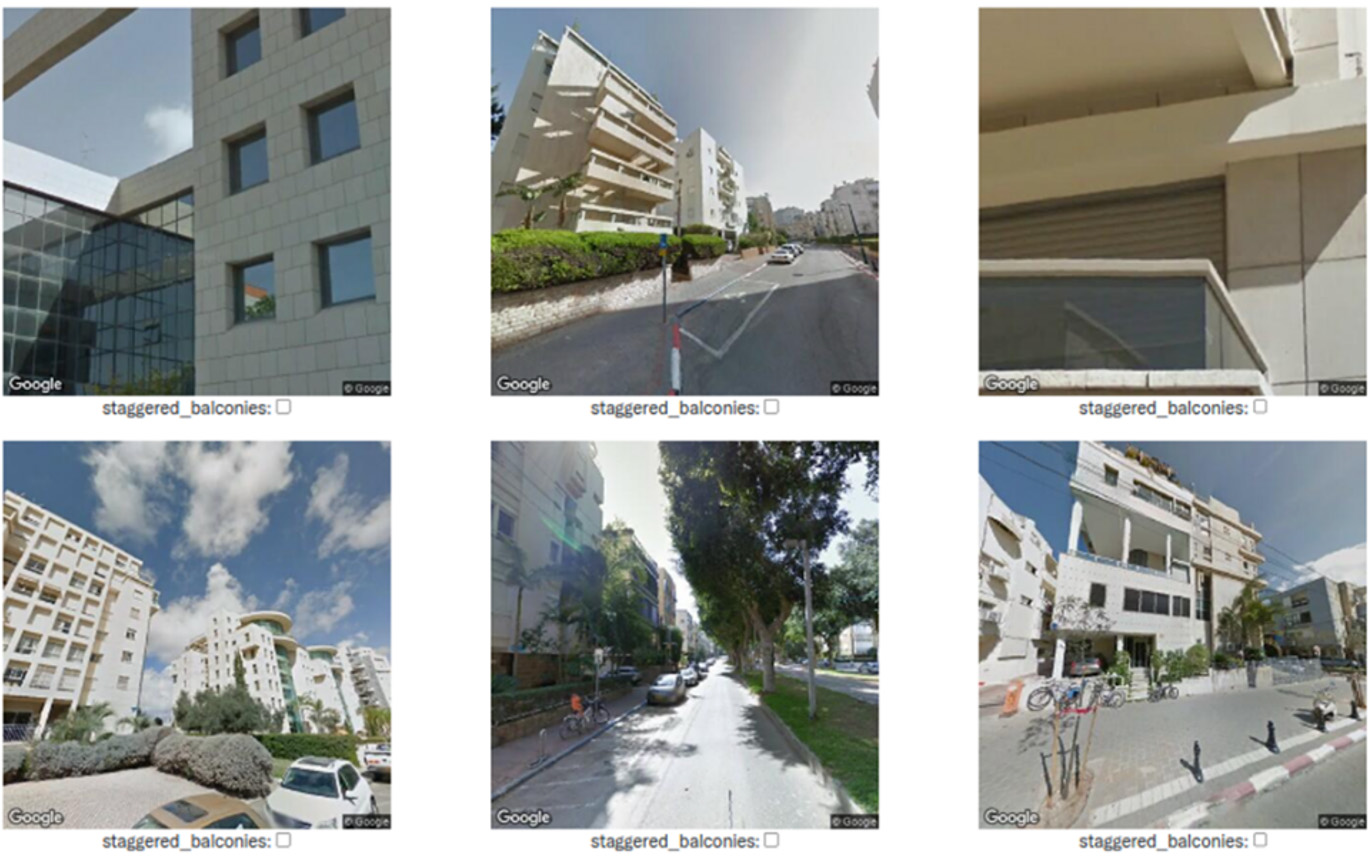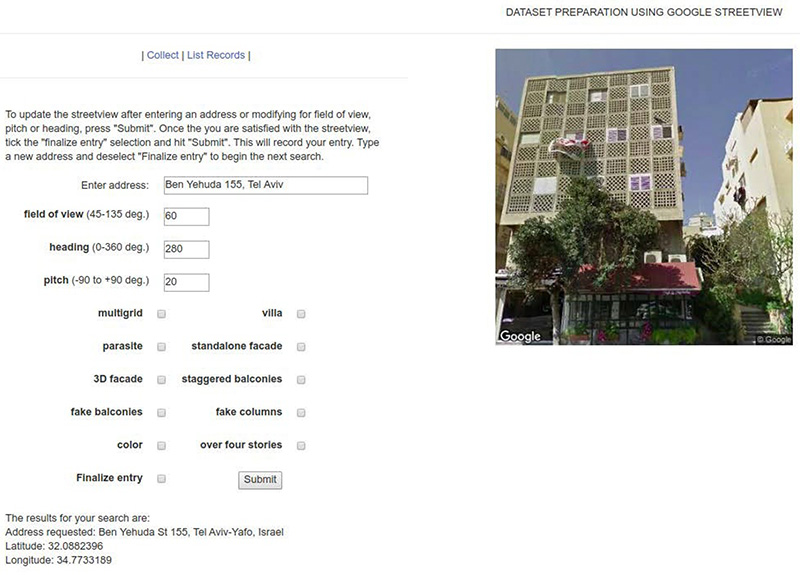
A digital archieve or the future of architectural archieves
The research project aims to combine methods of computation in architecture with the historiography of the built environment towards developing a new methodology for architectural archiving, the Future_ARChive.
The suggested research is concerned with developing a new computational approach to architecturalarchiving to meet deep changes in the nature and volume of architectural data. It suggests developing the methodology through identifying and classifying buildings of the postmodern period in Tel Aviv as a case study, in collaboration with the city’s Conservation Department. Even though this type of research question would typically fall within the field of architectural history, we have re-imagined it as a problem at the intersection of architectural computing and architectural history, by inquiring into the status of the archive in this age of increasingly democratized picture production of the built environment thanks to the proliferation of digital cameras and the internet. This picture production involves both “user-generated content” on social media, as well as systematic mapping like StreetView by Google. In the mainstream, the history of architecture has traditionally been discussed using a canon of buildings and built environments, either by building type or by the architect or by historical period/style. Nonetheless, the proliferation of digital images provides not only an opportunity to reconsider this mainstream formulation of the architectural canon. The study of the built environment, be it historical or otherwise, cannot ignore these new forms of image making. However, classifying and organizing these millions of pictures (i.e., creating an archive from these pictures) requires evolving from keyword-based archival
methods towards developing meaningful semantic reading and archival of images, which remains a significant open problem.
Classifying and categorizing buildings and elements of buildings has a long history in architectural scholarship, starting from the classical orders to the work of historians Wittkower, Pevsner, Bannister-Fletcher and Frampton, urban planners like Lynch, Krier, and Habraken, mathematicians like Alexander and architectural computational experts like Mitchel. Such efforts to identify forms, patterns and types are marked by subjectivity and specific cultural standpoints. These have been criticized for being reductive by architectural historians and largely abandoned.

Recent advances in computer processing power and the field of Computer Vision have made it possible torecognize and classify objects in pictures (for eg. faces, animals, cars, plants, buildings) by the use ofConvolutional Neural Networks (CNN) specifically and Machine Learning techniques generally. They offer a new approach to constructing an archive that could potentially contribute significantly to the study
of the built environment. Our methodological approach towards image recognition of the built environment proposes to replace textual keyword labeling with semantic labeling, developing a set of semantic swatches that pertain to identified facade features. Our approach uses the large corpus of building facades from Google Street View to extend a specialist database developed by the Tel Aviv Conservation Department, to build a classification system which uses this list of swatches to train and validate a CNN. The Streetview pictorial data is systematically collected and represents a new type of record of the built environment.
Developing this approach involves both conceptual and technical challenges which are interdisciplinary innature. The problem is of interest to the field of computational architectural representation as it allows
computational representations to be used for not merely geometry, but semantic features. The problem is of interest to architectural historians because it enables reconsideration of archives and provides a way forhistorians to expand the architectural canon and develop a meaningful semantic reading capacity for largevolumes of data. Given technical advances and a persistent scholarly imperative in architectural history to
expanding the archive of the built environment, the approach introduced in this proposal promises to be anovel methodological contribution to the interdisciplinary study of the built environment. This interdisciplinary research is therefore developed in collaboration between Dr. Yael Allweil’s research group in the History and Theory of Architecture and Urbanism, and Professor Yasha J. Grobman’s T-CODE research group which focuses on computation in architecture.
Moreover, our research trajectory finds resonance with a ‘proof of need’ demonstrated by the Tel AvivConservation department and the ‘White City Center’, our collaborators in this project. This research approach is of the utmost relevance to the city itself, as experience gained by the research will allow us to create a digital tool for the classification, documentation and future evaluation of the cityscape.
Furthermore, it will allow collaboration with additional cities by adapting the digital catalog of each city and enable identification and theorization of each phenomenon, thus producing an ever-growing catalog that will be useful for the understanding of diverse issues of urban phenomena.
In addition, the research contributes to the agenda of contemporary urban preservation led by the White City Center, namely, the HUL approach. HUL - Historic Urban Landscape - is an innovative approach promoted by UNESCO, which aims to balance urban development with historical and cultural preservation principles. The HUL approach is applied to urban areas characterized by stratification of attributes and calls for the creation of management systems that will balance the contemporary and future development needs with cultural and urban heritage. The new architectural archive proposed by this research can produce an effective tool for the analysis and management of urban heritage.
Funding:
The research was funded by the Israeli Ministry of Science. Grant 1181. 2020
The project is performed in collaboration with Prof. Yael Alweill
Scientific publications that were published on this research:



